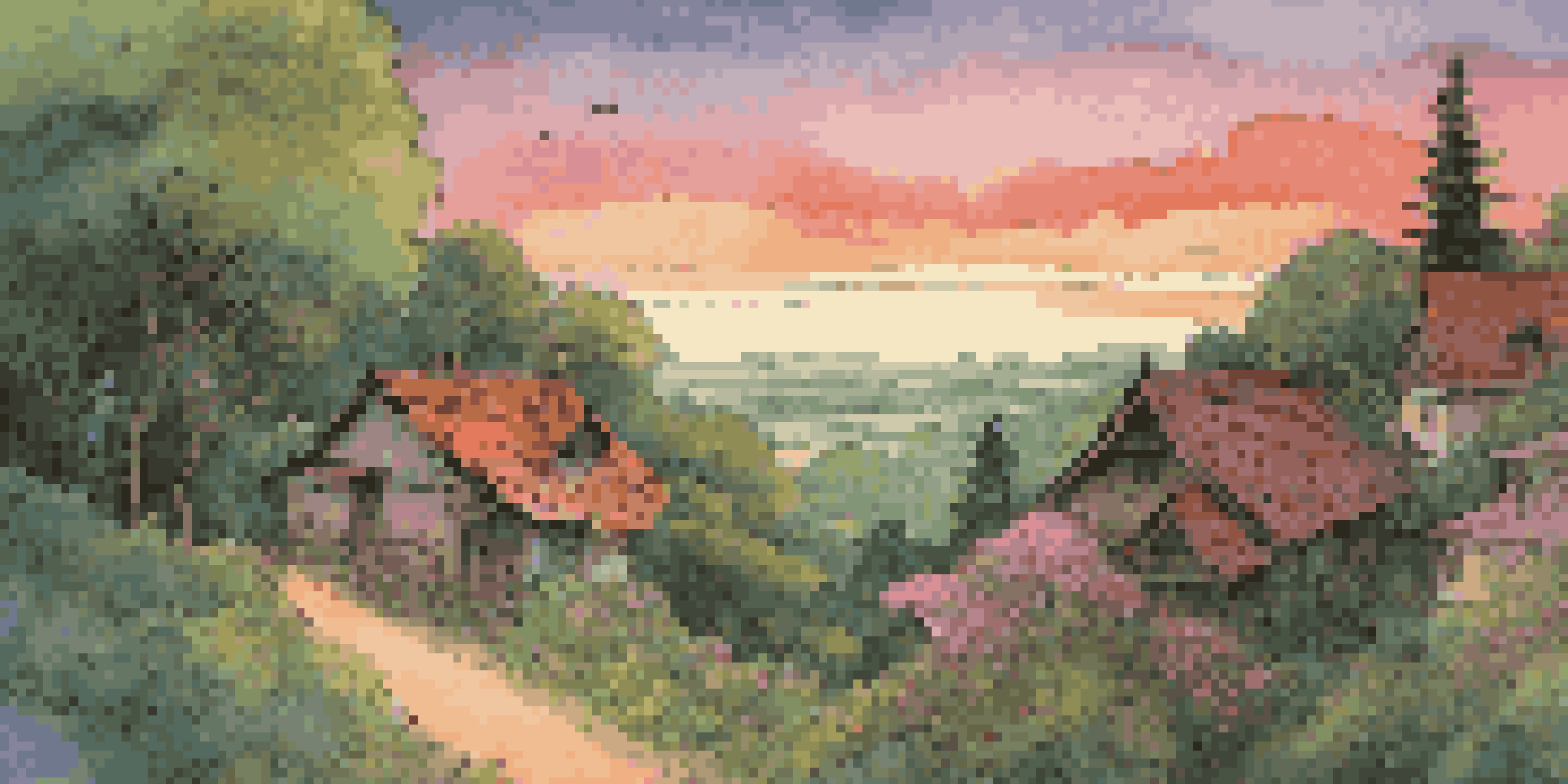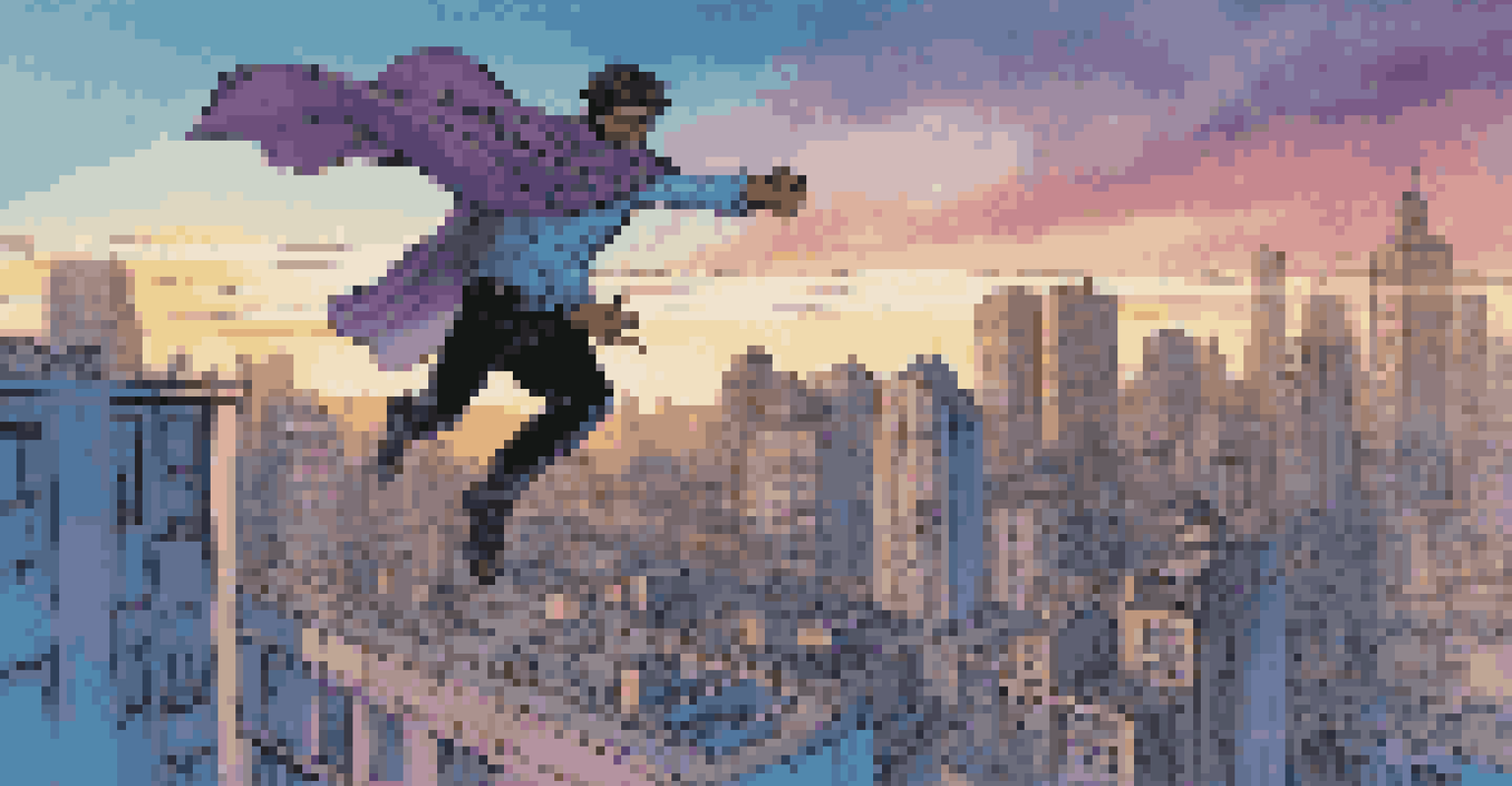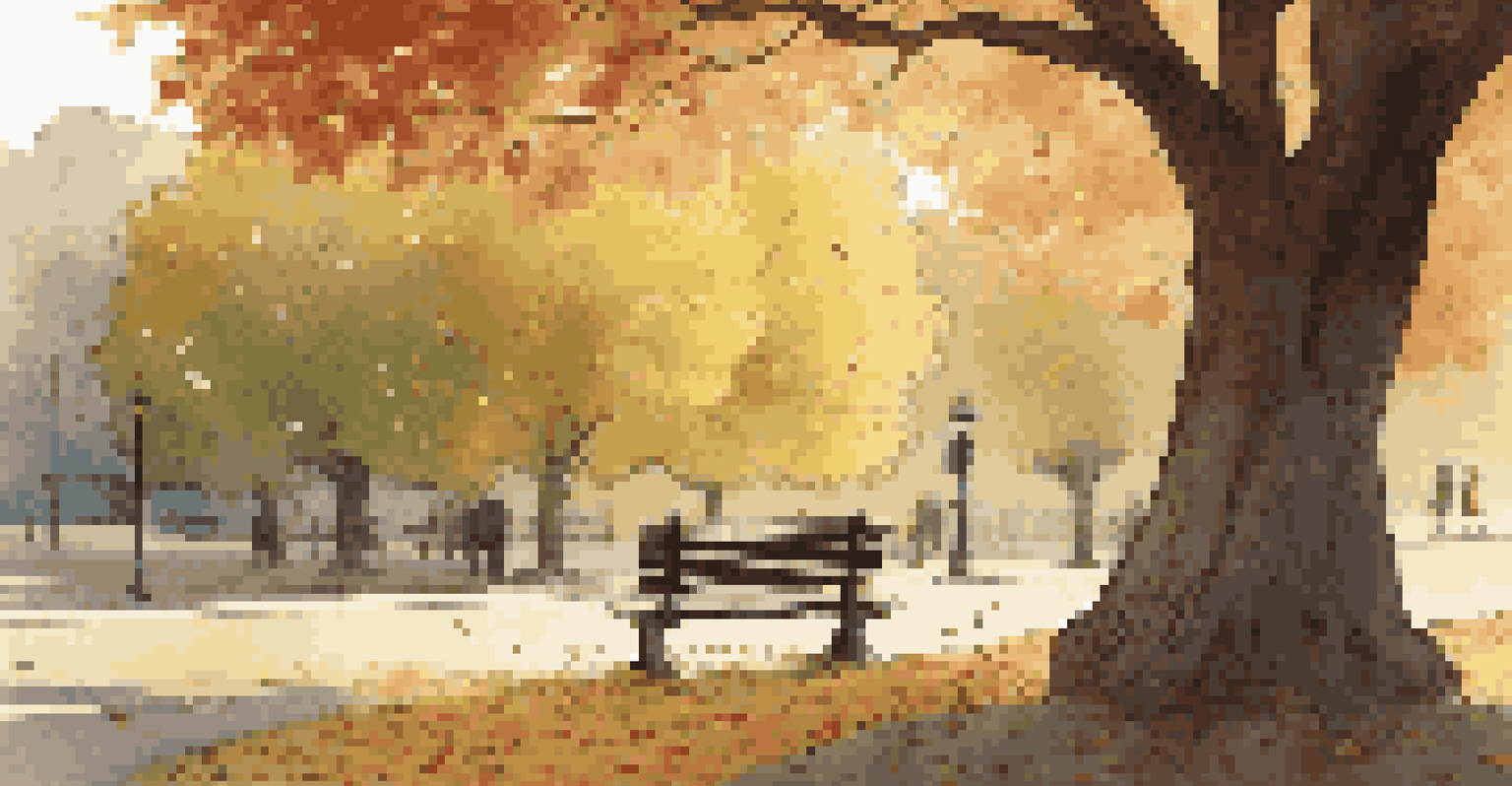The Portrayal of Time in Graphic Novels and Comic Art

The Concept of Time in Graphic Novels and Comics
Time in graphic novels often feels fluid, allowing readers to experience events in a non-linear fashion. Unlike traditional prose, graphic novels can manipulate the visual and textual elements to create a sense of time that varies from page to page. This unique approach invites readers to engage with the narrative on multiple levels, often making them feel like active participants in the unfolding story.
Time is a created thing. To say 'I don't have time,' is like saying, 'I don't want to.'
For instance, a story might start in the present, flashback to the past, and then jump forward again, all while maintaining a cohesive narrative. This technique not only adds depth to the storyline but also emphasizes emotional connections by showing how past events influence current situations. Such representations challenge readers to piece together timelines, fostering a sense of curiosity and engagement.
Additionally, the use of panels can give a distinct rhythm to the reading experience, affecting how time is perceived. A series of quick, sequential panels can create a sense of urgency, while wider panels may invite contemplation and reflection. Through these visual cues, artists can effectively manipulate the experience of time, making it a core element of storytelling.
Visual Techniques for Representing Time
Artists employ various visual techniques to convey the passage of time in graphic novels. For example, they might use varying panel sizes to indicate the duration of events; smaller panels often suggest quicker moments, while larger ones can signify longer, more contemplative scenes. This visual language becomes a tool for pacing, guiding the reader's emotional journey through the narrative.

Another popular technique involves the use of time-lapse or montage sequences. These sequences can compress time, showcasing a series of events that occur over a longer period in a single frame. By juxtaposing multiple moments within one panel, artists create a powerful visual shorthand that can convey significant changes or developments in a character’s journey.
Moreover, the use of color and shading can enhance the perception of time. For instance, warmer tones might be used for flashbacks, evoking nostalgia, while cooler tones could signify the present or future. These choices not only influence how readers perceive time but also how they emotionally connect with the characters and their stories.
Cultural Perspectives on Time in Comics
Different cultures have unique perceptions of time, and these variations are often reflected in graphic novels. For instance, Japanese manga frequently employs a cyclical understanding of time, where characters may revisit past events or themes throughout their journeys. This can create a rich tapestry of interconnected stories that resonate deeply with readers, emphasizing the importance of history and memory.
Memory is the treasure house of the mind wherein the monuments thereof are kept and preserved.
Conversely, Western comics often lean towards a linear progression, focusing on cause and effect within a straightforward timeline. Characters are typically portrayed as evolving in a more traditional narrative arc, which aligns with the cultural emphasis on individual growth and change. This dichotomy in time representation highlights the cultural influences that shape storytelling methods.
By exploring these cultural differences, readers can gain a deeper appreciation for how graphic novels reflect broader societal values. Understanding the context behind time representation enriches the reading experience, allowing for a more nuanced interpretation of characters and their narratives.
The Role of Memory in Time Representation
Memory plays a crucial role in how time is represented in graphic novels, often blending past and present in ways that shape character development. Through flashbacks and recollections, readers can see how past experiences inform a character's decisions and emotions in the present. This interplay highlights the complexity of time, as the past is always present in shaping the narrative.
For example, a character might reflect on a pivotal moment from their childhood, and through visually distinct panels, the reader can experience the emotional weight of that memory. This technique reinforces the idea that time is not merely linear; rather, it is a tapestry woven from memories that impact the current storyline profoundly.
By integrating memory into the narrative structure, graphic novels invite readers to ponder the significance of their own pasts. This connection fosters empathy and understanding, as readers see how shared experiences can shape an individual's journey over time.
Time and Character Development in Graphic Novels
Character development is often intricately linked to the portrayal of time in graphic novels. Characters may evolve over time, and their growth can be visually represented through changes in their appearance, relationships, and circumstances. This visual representation of time allows readers to witness transformations in a way that feels immediate and impactful.
Moreover, the pacing of a story can significantly affect how readers perceive character development. For instance, a slow-paced narrative may allow for more intricate exploration of a character's internal struggles, while a fast-paced plot might highlight their adaptability and resilience in the face of challenges. This dynamic interplay between time and character growth engages readers and makes their connections to the characters more profound.
In essence, the portrayal of time is essential in shaping how we understand characters and their arcs. By depicting the passage of time effectively, graphic novels can create more relatable and compelling narratives that resonate with readers on a personal level.
The Impact of Technology on Time Representation
Advancements in technology have significantly influenced how time is portrayed in graphic novels. Digital tools enable artists to experiment with time manipulation in ways that traditional media might limit. For example, animating elements within a graphic novel can create a dynamic reading experience that plays with the perception of time, blurring the lines between comics and animation.
Additionally, the rise of webcomics has introduced new formats for storytelling, allowing for non-linear narratives that can unfold across multiple updates. This format encourages readers to interact with time on a different level, as they may return to a story over days or weeks, creating a unique relationship with the narrative. The ability to control when and how they engage with the story adds a layer of complexity to time representation.
Ultimately, technology has expanded the possibilities for graphic narratives, allowing creators to explore innovative ways to represent time. As these techniques evolve, readers can expect to see even more creative storytelling methods that challenge traditional perceptions of time.
Future Trends in Time Representation in Graphic Novels
As the graphic novel medium continues to evolve, future trends in time representation may become even more experimental. With the rise of virtual reality and augmented reality, creators could explore immersive storytelling that allows readers to experience time in unprecedented ways. Imagine stepping into a graphic novel where you can navigate through different timelines or interact with characters in real-time.
Furthermore, the popularity of interactive storytelling may lead to more branching narratives, where readers can choose how time flows within the story. Such developments could redefine the reader's role, making them active participants in shaping the narrative and experiencing different outcomes based on their choices.

In conclusion, the portrayal of time in graphic novels and comic art is an ever-evolving landscape, rich with possibilities. As technology and storytelling methods advance, we can anticipate even more innovative ways to explore the multifaceted nature of time, enhancing both the reading experience and the depth of narrative.